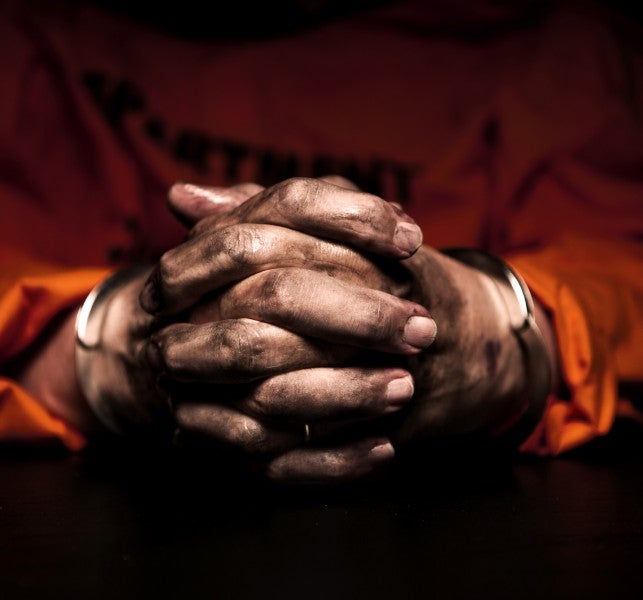
The broad facts about incarceration in the United States are well-known and unlikely to swell your national pride. Americans make up only 5 percent of the world’s population, while US prisoners constitute 25 percent of the world’s prison population. One in every 99 adults in the US lives in prison, and the number of people who live under some sort of “correctional supervision”— jail, prison, probation, or parole — totals about 7.3 million people, more than the combined populations of Chicago and Los Angeles. The cost of all this to our country: around $70 billion a year.
The Aspen Institute Arts Program took up the issue of how to improve the lives of our overabundant prison communities, and how to best prevent parolees from ever returning to jail in its final public program of 2014, “Art and incarceration,” at Lincoln Center in New York. Meade Palidofsky, founder and artistic director of Chicago’s Storycatchers Theatre, and Sabra Williams, actress and founder of Los Angeles’ Actors’ Gang Prison Project, spoke with Washington Post critic Philip Kennicott about their work teaching drama to the incarcerated populations of California and Illinois. The discussion was accompanied by a performance from Storycatchers’ alumna Angelica Garcia.
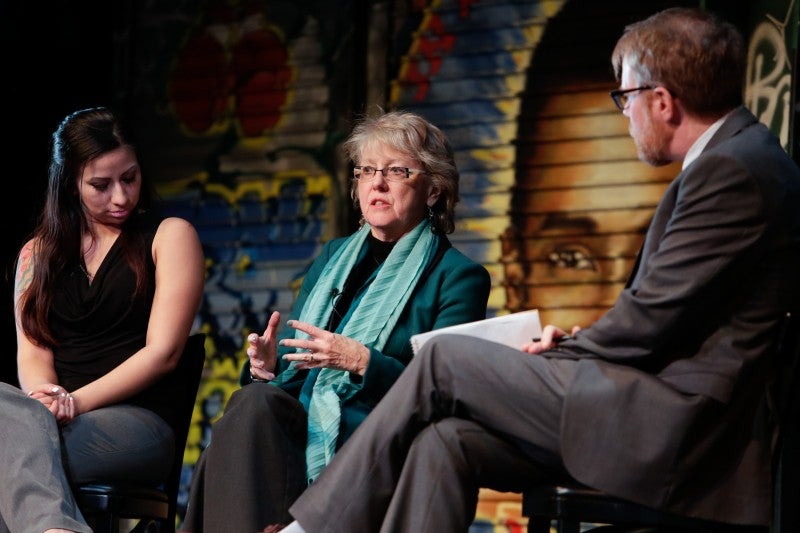
From left to right: Storycatchers Theatre alumna Angelica Garcia, Storycatchers founder Meade Palidofsky, and Washington Post critic Philip Kennicott (Photo Credit: Erin Baiano)
Palidofsky has been working in jails and detention centers since 1990 and focuses on juveniles. Storycatchers, she explained, uses “the process of telling personal stories to help kids to look at their environments and their relationships, their choices that they’re making and the consequence of their choices.” Over the course of year-round programs that Palidofsky has developed for Storycatchers, participants are given prompts — like “truth-telling” or “war and peace”— to spark the writing of their stories, which they do over the course of two sessions. The results get translated into dramatic scenes.
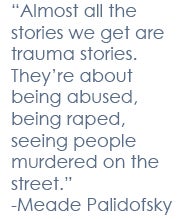
“Almost all the stories that we get are trauma stories,” she said. “They’re about being abused, being raped, seeing people murdered on the street. And we don’t always ask for those stories, but that’s what people go back to.”
The scenes are performed by somebody other than the original writer, “so that you have the possibility of seeing your life on the stage and seeing the reactions of the other people in your life,” Palidofsky said. “It’s really about being able to take your life and your painful story and put it outside of yourself and make it about everybody.”
Williams’ Actors Gang Prison Project grew out of the theater company The Actors Gang, founded by Academy Award–winning actor Tim Robbins. The Prison Project teaches drama to adult prisoners in eight-week workshops, creating scenes using the techniques and tropes of commedia dell’arte, whose style is rooted largely in sixteenth-century Italian theater. Actors performing in commedia dell’arte scenes work in ensembles, wear masks, and play stock characters — many of which are still recognizable in comedies today — such as the two lovers, the miserly old man, the opportunistic rogue, or the crafty maidservant.
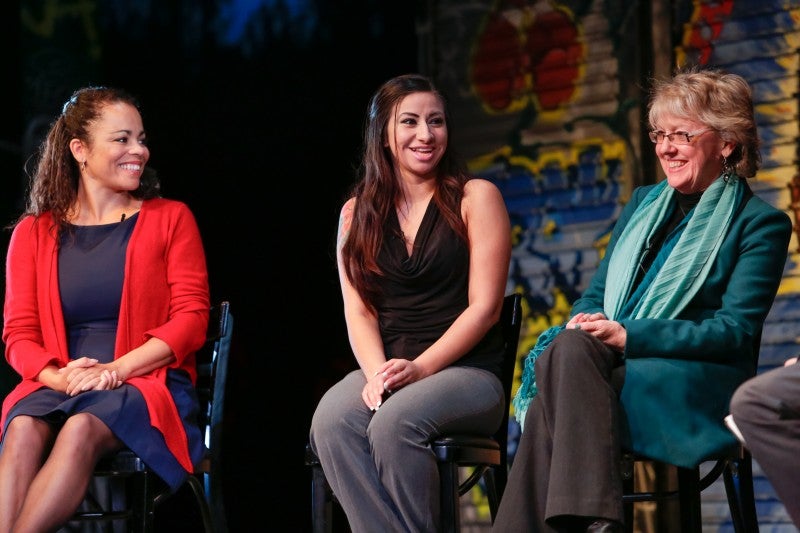
Actress and Los Angeles’ Actors Gang Prison Project Founder Sabra Williams with Garcia and Palidofsky (Photo Credit: Erin Baiano)
Williams called it a “highly emotional and physical form of theater” that she first brought to prisons simply by picking up the phone. “I’d call prisons before anybody knew about the work and say, ‘Hey would you like us to come to your prison and put makeup on your guys, and do, you know, four hours of what we call the theater of sweat with no breaks?’ They were kind of like, ‘Well, that’s so crazy you should really come and try it.’”
The Prison Project is intent on getting inmates on the stage and performing. And even though she had prior experience working in prisons at home in her native England, Williams said she “had no idea how profoundly it would help to transform these peoples’ lives… We give them tools to manage their emotional lives, give them empathy, take responsibility — all these things that you would hope that the arts could do for people.”
After encountering trauma after trauma in the narratives presented by Storycatchers students, Palidofsky spent a year working with a trauma therapist so that she could compare the process she was utilizing as an artist to the processes of complex trauma therapy. “We found it actually contained all the same elements,” she said.
Garcia joined Storycatchers in 2009, while incarcerated at an Illinois youth facility on a parole violation. Upon returning to the detention center, “They told me to basically get comfortable — you’re gonna be here for a while…I was very upset; I was already in college, I worked, and I didn’t have [anything] to do now except watch TV and idle time.”
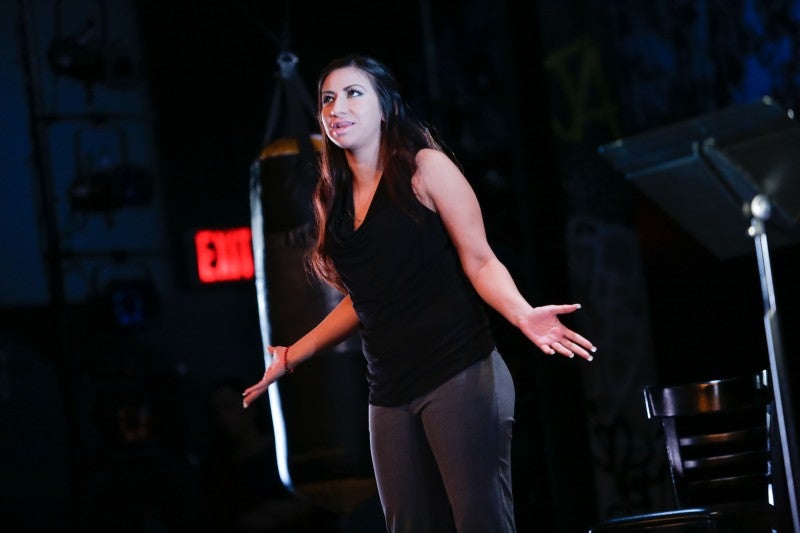
Former inmate and Storycatchers’ alumna Angelica Garcia (Photo Credit: Erin Baiano)
Garcia’s performance narrated stories of a friend being shot in the street, of a seven-year-old girl being given by her father to a 57-year-old man who “fed her junk food and raped her repeatedly,” and her own experience (Storycatchers performers who have been released from prison get to tell their own stories) of being raped and subsequently beating a girl she didn’t really know because “it feels good to finally let my anger out.”
“If you work with juveniles, 49 percent of them are locked up on violations of probation and parole,” Palidofsky pointed out. “Most of the kids we work with commit one crime, and then they may spend their entire teenage life through [age] 21 going back because they had a fight with their mother, they left the place where they were paroled to, they didn’t go to school… All the kinds of things that you would not be incarcerated for if you did it as someone who had not previously committed a crime.”
Storycatchers has thus turned to life after prison as well. Working with what are known as “after-care” specialists, Palidofsky developed a theater program called Changing Voices. “What we’re trying to do is build a statewide program, so that in every judicial district in Illinois there would be a theater group of these young people that get out [of prison],” she explained. “It would be a job, and they would be mentors in their communities… And they could make careers out of it.” And when parolees apply for Changing Voices, there’s no need to lie on the application: “Imagine… instead of [having] no work and you can’t be hired because you have a felony on your record, on our application, it asks how many times did you offend? And that’s a good thing.”
Williams and the Actors Gang Prison Project also work to reduce recidivism, but measuring an art program’s ability to reduce something, which is in itself complex to define in the first place, presents innumerable difficulties. But Williams and Palidofsky are both brimming with anecdotal evidence, having witnessed among the participants in their programs strides in leadership skills, critical thinking, and self-reflection.
Both programs have also been asked by their respective states to work with the states in creating programs, whether adding to the list of California prisons that Williams works in, or piloting the Changing Voices program in Illinois. Outside studies of implementing arts-related programs in prison also show that it can open pathways to a broader interest in education, and that educational achievement has the power to reduce recidivism.
Williams recently received state funding for the first time in eight years, and the money is being used to conduct a recidivism study.
“The recidivism number is the only thing that matters in this country right now,” she said. “But you’re trying to measure right-brain activities with left-brain measurements. We have to find a way that this eight years’ mountain of evidence means something… If we are going to honor the arts and the power of the arts for transformation, we have to measure differently. And that’s a very big and very, very difficult thing to do.”
Today, more than 200 inmates are waiting to join the Prison Project. Last year, President Barack Obama’s Committee on the Arts and Humanities presented Palidofsky with the National Arts and Humanities Youth Program Award. These are just two of the many signs that, measurements or not, these programs are doing something right.
Aidan Flax-Clark is senior project manager of the Aspen Institute Arts Program.

